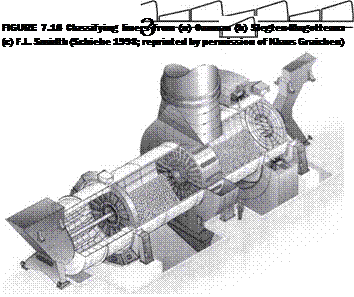Figure 7.18 shows three types of classifying liners. As clinker grinding mills increased in length, it became necessary to devise a system by which the coarse balls were continually thrown back to where the coarsest particles of ore were at the feed end of the compartment. Hardinge had designed his “tricone” mill for this purpose, and later inventors sought to achieve the same result by modifying the design of liners.
Two Ball Mills in One Shell with an Intermediate Separator
Classification within grinding circuits improves efficiency and is used in the “doublerotator” two-compartment mill that Krupp Polysius introduced in 1951. This mill can be regarded as two mills in series in the same shell. Figure 7.19 depicts the mill, which uses one drying and two grinding compartments and a classifier.
The features of the double-rotator mill are
■ The ore that has been ground in the first chamber is presented to a dynamic air classifier for separation of the fine particles.
■ The rejects from the dynamic classifier are reground in the second grinding chamber and flow in the opposite direction through the mill.
 |
FIGURE 7.19 Krupp-Polysius two-compartment mill (reprinted by permission of Krupp Polysius)
The double-rotator mills built in the mid-1950s were 2.2-3.4 m in diameter and 6-8 m long, with 600-kW motors and feed rates of 20-60 tph. The largest mill now is 6.2 m in diameter, 25.5 m long, and is driven by an 11,200-kW motor. The need to grind refractory gold ores for roasting before leaching has revived interest in these mills. In 2000, two two-compartment double-rotator mills, 5.9 m in diameter by 21.3 m long with 7,500-kW motors, started working at Barrick Gold’s Goldstrike mine in Nevada. Airflow to each mill was 110,000 m3/min; the product from the first chamber was -6 mm, and the final product was 86% passing 74 |im. Approximately 20% of the dynamic classifier rejects went to the coarse end of the mill and 80% to the fine end.
The mills have proved to be suitable for dry grinding hard, abrasive ores for roasting and leaching at reasonable costs. Traditionally dry grinding has used more energy per ton than wet grinding for the same duty, so wet grinding has been preferred for metal ores. But the energy efficiency of dry-grinding tube mills is increasing, and they promise to be used more widely in the future with metallic mineral ores.
